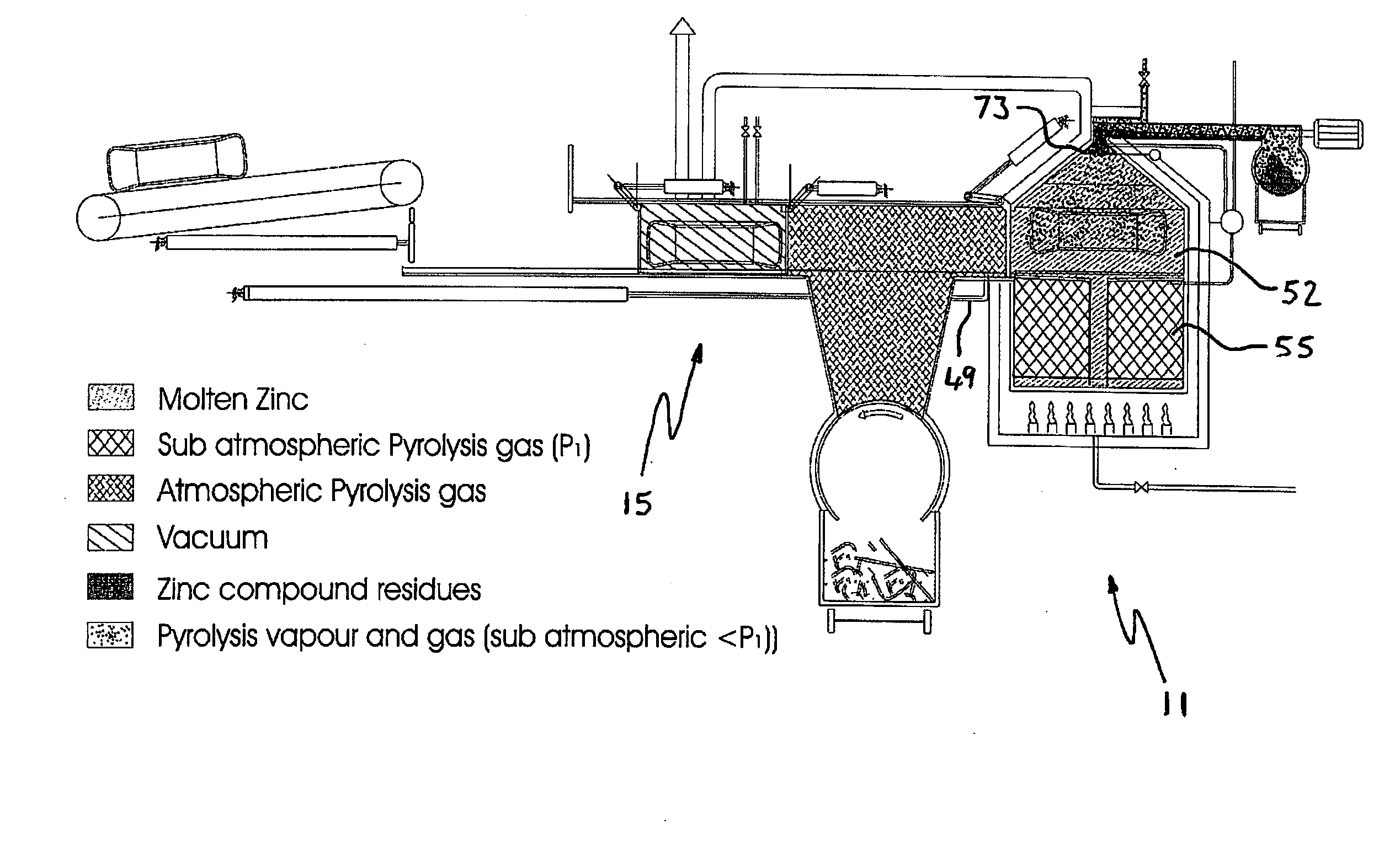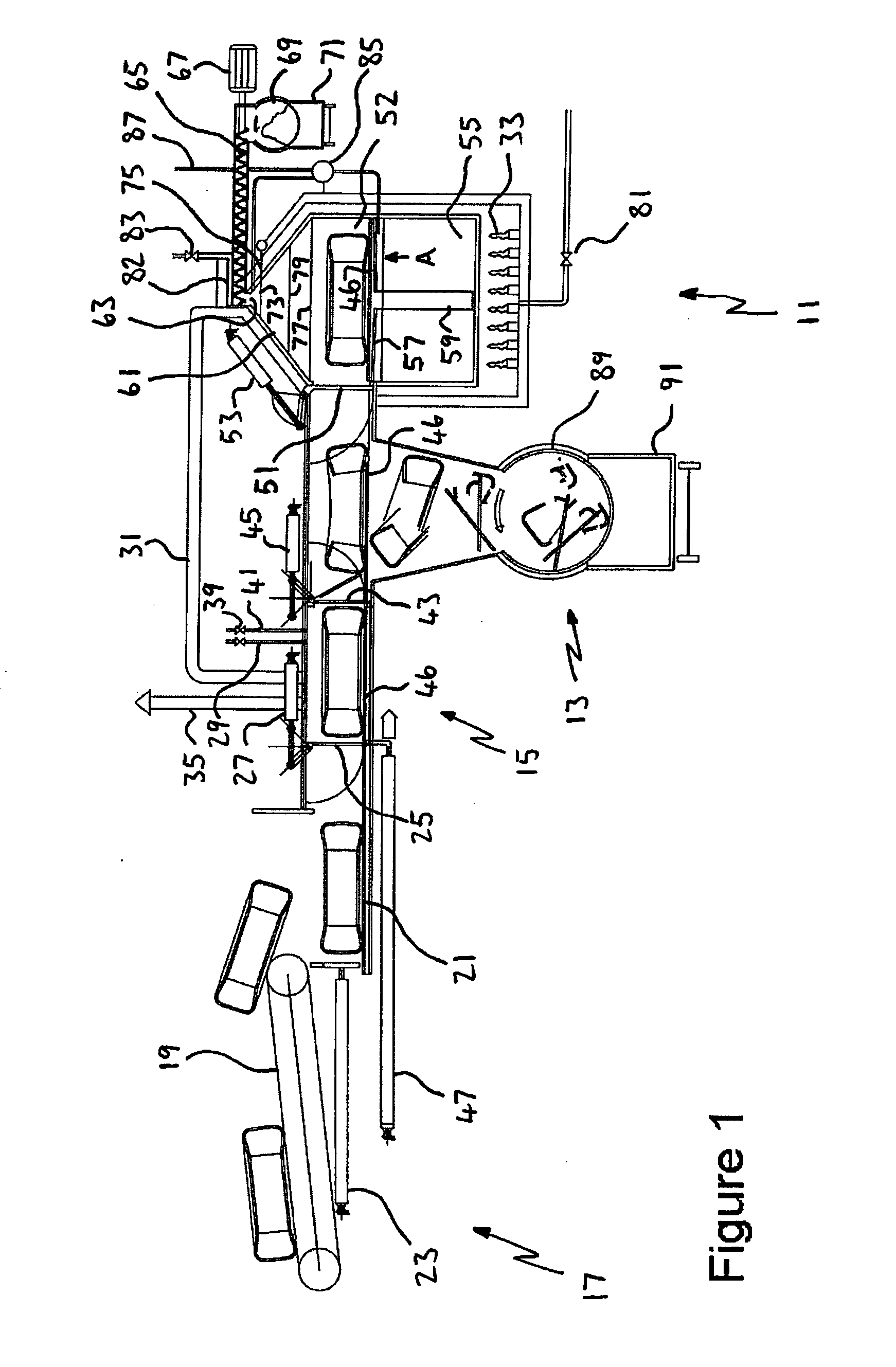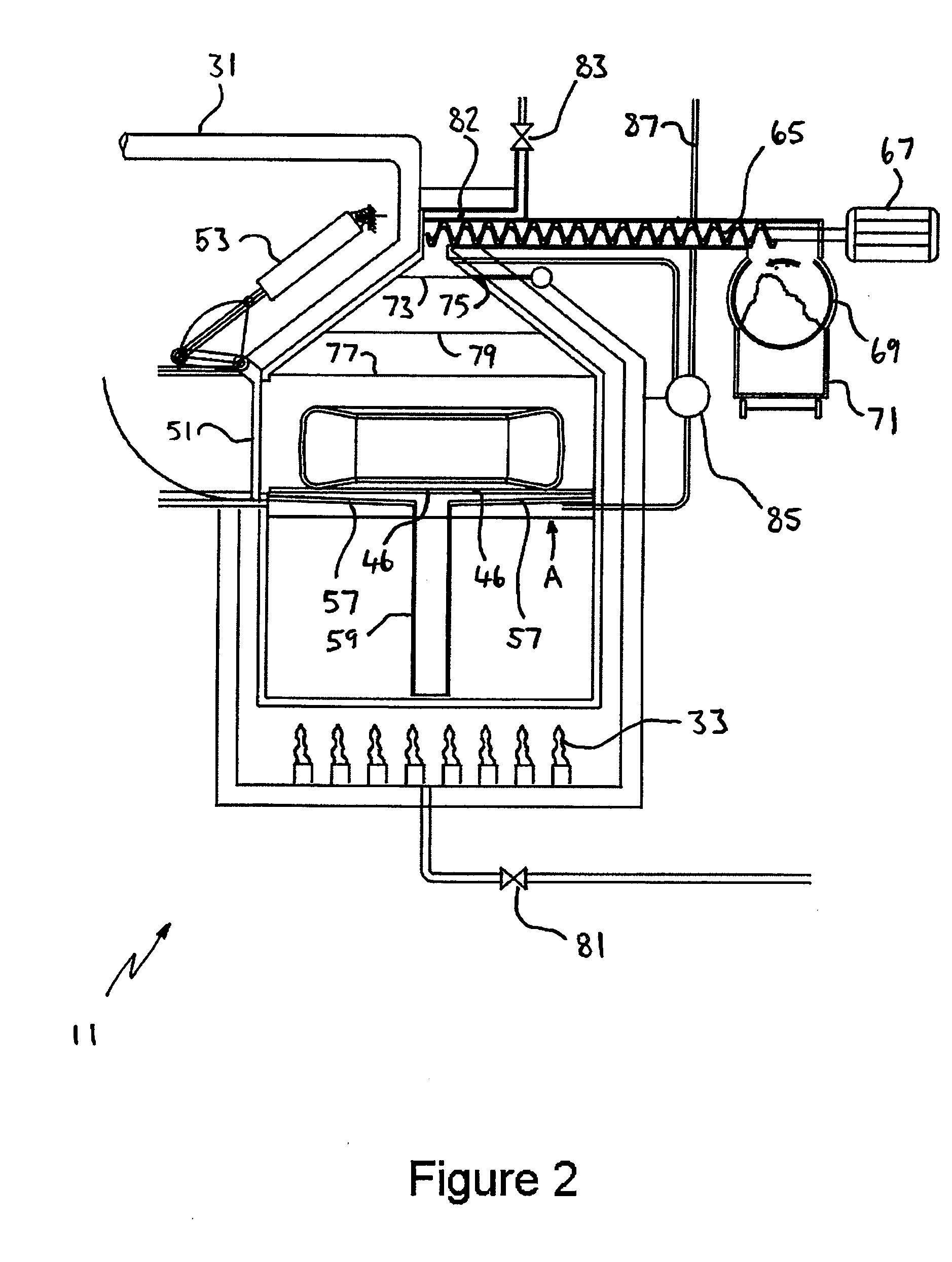Process and apparatus for decomposition of polymer products including those containing sulphur such as vulcanised rubber tyres and recovery of resources therefrom
a technology of vulcanised rubber and decomposition process, which is applied in the field of decomposition process of polymer products, can solve the problems of increasing the capital and energy requirements of these processes, the difficulty of tyre disintegration, and the enormous challenge of environmental responsibility in the disposal of waste tyres, etc., and achieves the effect of increasing output and economic benefits
- Summary
- Abstract
- Description
- Claims
- Application Information
AI Technical Summary
Benefits of technology
Problems solved by technology
Method used
Image
Examples
Embodiment Construction
[0102]The embodiment is an apparatus for pyrolytic decomposition of used vehicle tyres. The apparatus consists of a reactor 11 which is a thermally insulated reaction vessel, a solids residue discharge chamber 13, a contaminant evacuation chamber in the form of a drying chamber 15 and a transport apparatus 17.
[0103]Waste tyres to be pyrolysed are fed by means of a belt conveyor 19 of the transport apparatus 17, and dropped from the belt conveyor 19, onto a bed 21 located in front of a linear actuator 23 which is shown in its fully retracted state.
[0104]By means of a signal from the control system (not shown) a gate 25 opens by means of an actuator 27. The linear actuator 23 is controlled to then push the tyre into the drying chamber 15.
[0105]With the tyre positioned in the drying chamber 15, the gate 25 is closed and air is evacuated from the drying chamber 15 by pipe 29 connected to a vacuum pump (not shown).
[0106]The drying chamber 15 is heated above ambient temperature preferably...
PUM
| Property | Measurement | Unit |
|---|---|---|
| Temperature | aaaaa | aaaaa |
| Temperature | aaaaa | aaaaa |
| Temperature | aaaaa | aaaaa |
Abstract
Description
Claims
Application Information
 Login to View More
Login to View More - R&D
- Intellectual Property
- Life Sciences
- Materials
- Tech Scout
- Unparalleled Data Quality
- Higher Quality Content
- 60% Fewer Hallucinations
Browse by: Latest US Patents, China's latest patents, Technical Efficacy Thesaurus, Application Domain, Technology Topic, Popular Technical Reports.
© 2025 PatSnap. All rights reserved.Legal|Privacy policy|Modern Slavery Act Transparency Statement|Sitemap|About US| Contact US: help@patsnap.com



